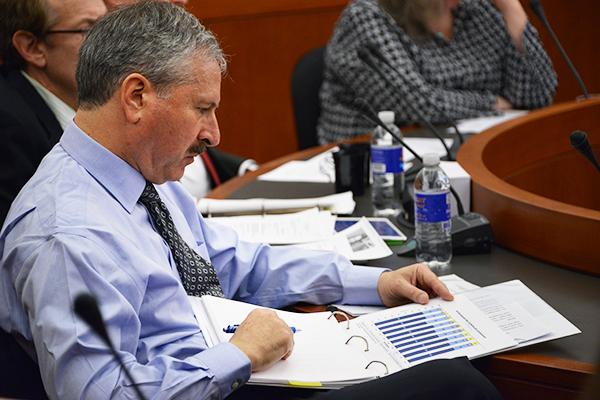One in five students who arrive at GW don’t graduate within six years – a statistic that has troubled top administrators and prompted them to spend the next few months researching what factors lead students to graduation.
The University will launch its largest study of graduation rates in recent years, Provost Steven Lerman said last week. GW has poured money into academic and student support under its last two administrations, but the graduation rate – a yardstick of college caliber – has barely budged over the past decade.
The University’s six-year rate has hovered around 80 percent for the last five years. That figure rose almost one full percentage point to 80.8 percent for the class that entered in 2007, according to data that Lerman announced last week.
Those rates are far above the national average, but fall below the universities GW wants to emulate, like New York University and the University of Southern California. Those competitors graduated 85 and 90 percent of students in six years, respectively, according to the latest data available.
The University has never tracked the reasons that students leave GW before earning a degree. But this spring, administrators will try to identify the types of the students who leave by looking back at their admissions applications.
“Are there programs we could create that will help students who might be at risk for not succeeding?” Lerman said. “Our aspirations have to be that every student ideally would graduate.”
Lerman said they would try to find possible correlations between certain backgrounds and characteristics, such as those who receive financial aid, to determine who is less likely to have success at GW.
For the class that entered in 2004, 80.1 percent of students who received a Pell Grant and 82.68 percent of those who received federal loans graduated in six years.
The study comes as Lerman has tried to emphasize how the University uses data in decision-making, as administrators have tried to be more conscious of what information GW tracks.
To look for solutions, the University will look narrowly at one student population in particular with some of the highest graduation rates – varsity athletes.
About 93 percent of student-athletes who entered GW in 2006 earned a degree. GW athletes, who must attend all of their classes or risk losing playing time, also have a full support staff behind them, including personal advisers and tutors.
Athletic director Patrick Nero said last fall that he’d spoken with the provost and members of the Board of Trustees about how athletes’ academic success could be translated across the University. He’s now part of a University-wide committee that studies how students succeed academically.
“Are there ways to take success that athletes are seeing, to build in structure around first year experience and different programming?” he said.
Lerman said he wanted to see what aspects of the athletic department’s academics could be applied across the student body, like stronger tutoring and advising. Athletes whose GPAs fall below 2.5 face required study halls and summer courses on some teams.

The study will also consider how students’ involvement on campus affects whether they graduate.
“We know, just anecdotally, that peer-to-peer learning is very important to students,” Lerman said. “Students who have strong peer groups with whom they can study together learn from each other and are more successful.”
Peter Konwerski, dean of student affairs, said resources like the University Counseling Center and the CARE network, which responds to various student concerns, help keep up GW’s graduation rate.
Student affairs officials also work closely with Laurie Koehler, senior associate provost for enrollment management, and Terri Harris-Reed, vice provost for diversity and inclusion, on how to improve retention, Konwerski said.
Doug Lederman, an editor at the news website Inside Higher Ed, said students at more selective universities sometimes take longer to graduate because they study abroad, intern and take classes unrelated to their major.
A system that lets students plan out what classes are needed to graduate on time – like GW’s DegreeMap – could help increase the percentage of successful students, Lederman said.
Still, Lederman said universities shouldn’t aim for a 100 percent graduation rate because it would call into question the curriculum’s rigor.
“Not everybody’s meant to finish college. And even at a place like GW, some people are going to go there and not be cut out for it,” he said.







